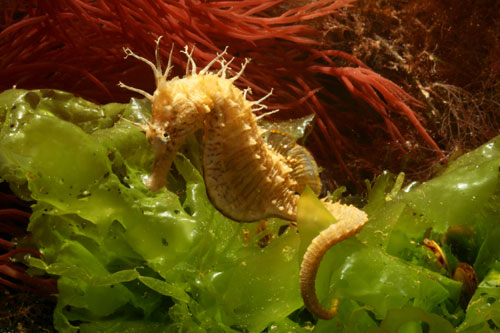Successful killing by stealthy seahorses comes down to their snouts
Ars Technica » Scientific Method 2013-11-29
Don’t let their delicate, graceful appearance fool you: seahorses are efficient and effective killing machines. They are among the most successful hunters in the sea, often reaching a 90 percent success rate (two to three times that of many other predatory fish). But unlike many marine predators, they don’t have lightning-fast speed, strong suction, or creepy catapulting jaws on their side. Instead, seahorses have another evolutionary trick up their sleeve.
Seahorses creep up slowly on their unassuming prey, then, once within range, snap their head around and slurp the snack into their mouth—experts call this strategy "pivot feeding." But it's no easy feat, especially in the calm seagrass beds where seahorses spend most of their time. Here, prey tends to rely on hydrodynamic clues to sense predators. Even a slight disturbance in these calm waters can signal to prey that there’s danger approaching.
Until recently, it’s been unclear how hunting seahorses can escape detection so effectively. But now, new research in Nature Communications demonstrates that the seahorse’s oddly shaped head plays a major role in its sneaky behavior and hunting success.
Read 8 remaining paragraphs | Comments





